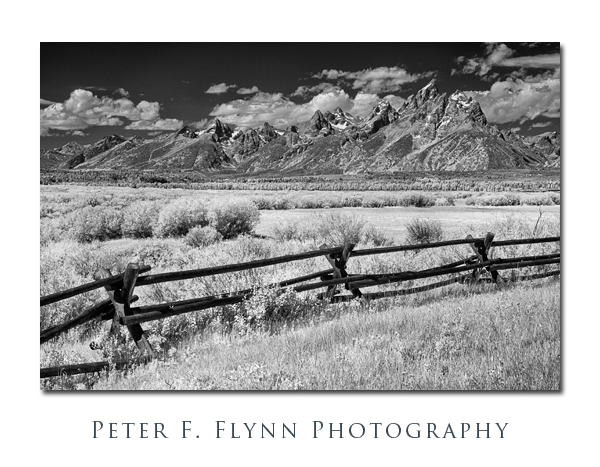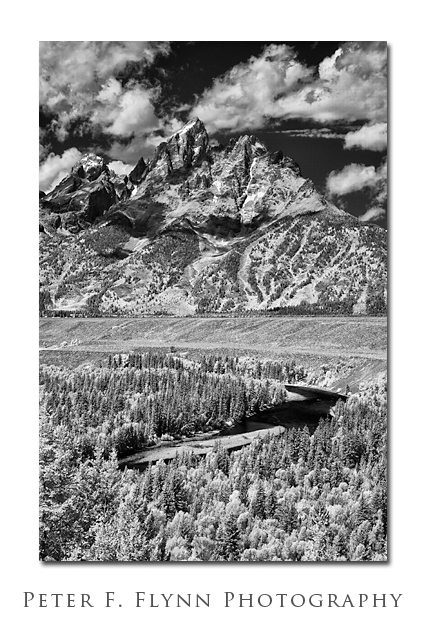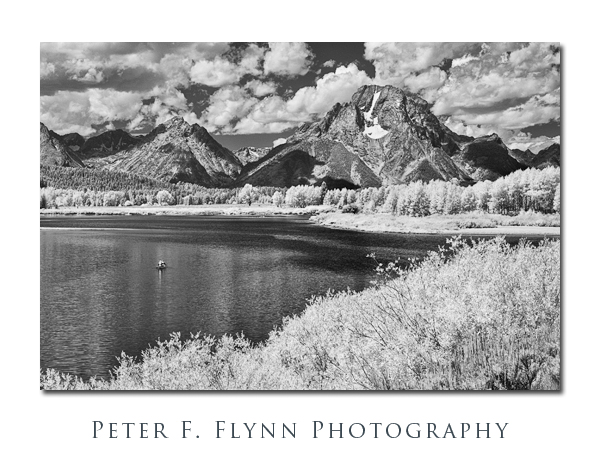Photography at Grand Teton National Park presents some challenging timing issues. Since you will most likely be shooting from a location along the eastern side of the Tetons, your best light will come at dawn, and there are no very good options for late afternoon shooting. Of course these rules only apply to visible light – head over to the near IR and you open up some excellent additional possibilities.
In my view, and I believe some of the images included in this entry may back me up, the near IR may have some distinct advantages over convention visible light BW rendering . In addition to the ascetical advantages, there are three significant technical advantages. First, the haze that is commonly apparently from mid-morning on through dusk is invisible in the IR. Secondly, excellent captures can be made just about anytime between 10:00 and 14:00, assuming that the cloud cover is minimal. Finally, since all ‘good photographers’ know that you cannot make decent capture outside of the golden hours, you will have what may normally be crowded locations all to yourself.
The images in this entry were all recorded from points all the Jackson Hole Highway – see the March 7, 2011 entry for more on this most excellent road. Captures were recorded between 11:30 and 12:45 on August 8, 2010, using the Nikon D200 converted to IR , and the AF-S 16-85mm f/3.5-5.6G VR IF-ED lens at focal lengths of between 35mm and 50mm . The IR conversion was made by Life Pixel, using their Deep BW IR option – equivalent to Wratten 830nm filter. Images processed using Nik SIlver Efex Pro 2 and Adobe Photoshop CS5.
Copyright 2011 Peter F. Flynn. No usage permitted without prior written consent. All rights reserved.
Tags: Cunningham Cabin, D200IR, Grand Teton National Park, IR images, Jackson Hole Highway, Life Pixel, Mt. Moran, Oxbow Bend, Snake River Overlook



Boy that IR cuts the haze to nothing. Talk about tack sharp. The top shot does not look IR. It looks like the grass is simply dry wheat grass that is yellow in color and you did a conversion to Black and White. Not until you look at it more and more do you see that its IR. Good work sir.